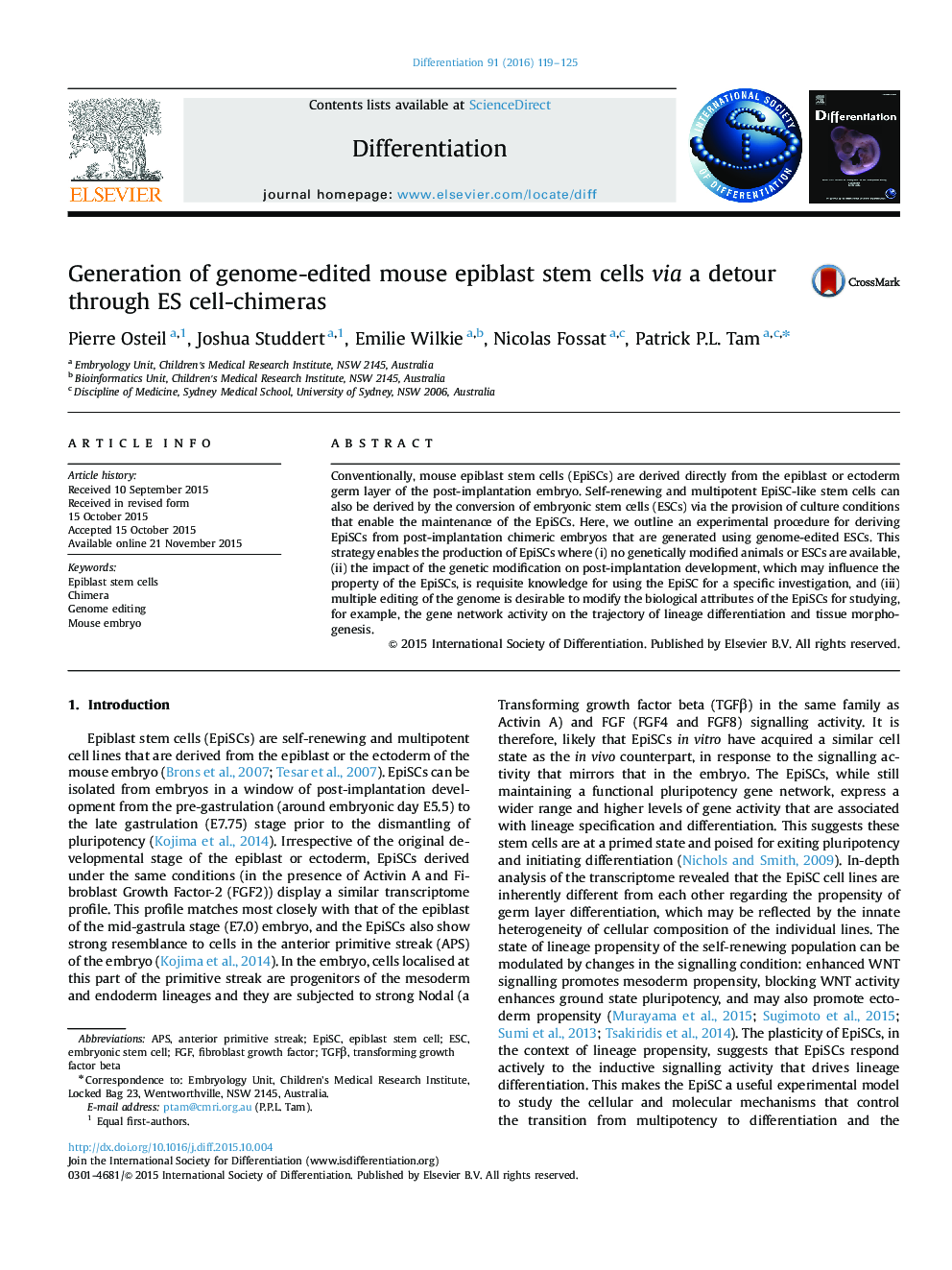| Article ID | Journal | Published Year | Pages | File Type |
|---|---|---|---|---|
| 2119288 | Differentiation | 2016 | 7 Pages |
Conventionally, mouse epiblast stem cells (EpiSCs) are derived directly from the epiblast or ectoderm germ layer of the post-implantation embryo. Self-renewing and multipotent EpiSC-like stem cells can also be derived by the conversion of embryonic stem cells (ESCs) via the provision of culture conditions that enable the maintenance of the EpiSCs. Here, we outline an experimental procedure for deriving EpiSCs from post-implantation chimeric embryos that are generated using genome-edited ESCs. This strategy enables the production of EpiSCs where (i) no genetically modified animals or ESCs are available, (ii) the impact of the genetic modification on post-implantation development, which may influence the property of the EpiSCs, is requisite knowledge for using the EpiSC for a specific investigation, and (iii) multiple editing of the genome is desirable to modify the biological attributes of the EpiSCs for studying, for example, the gene network activity on the trajectory of lineage differentiation and tissue morphogenesis.
Graphical abstractFigure optionsDownload full-size imageDownload high-quality image (167 K)Download as PowerPoint slide
